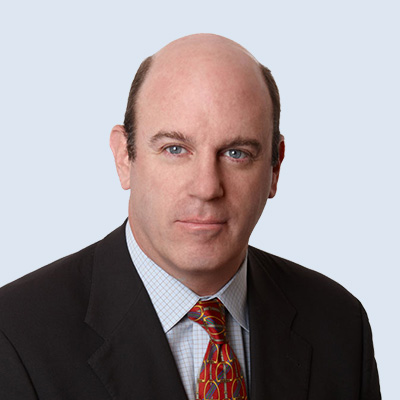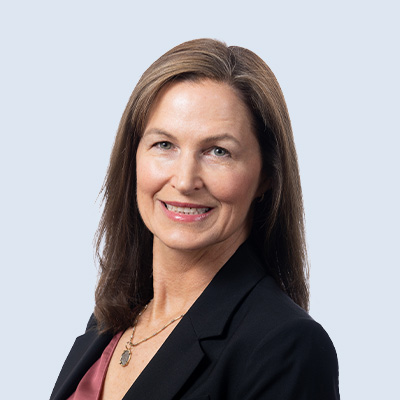Ted Grossman: Hello, this is Ted Grossman and Rachel Parrinello from the Alexander Group. We’re here today to continue our podcast series on recurring revenue and X as a service models in the tech industry and specifically how these models are impacting sales compensation and sales compensation professionals. To this end, we have an honored guest on the call, Robert Bieshaar, who is a leading sales compensation professional and is currently senior director of Worldwide Incentives at Autodesk.
Rachel Parrinello: Robert, glad to have you with us today. Before we dive into our specific questions, can you please share with us at a very high level where Autodesk is in its journey to access a service?
Dr, Robert Bieshaar: Absolutely. So thank you, Rachel. Thank you, Ted, for the introduction. I’ll take a little bit of a step backwards in the sense of Autodesk was a classic perpetual software provider, mostly in the construction, manufacturing and media and entertainment business. A few years ago, the decision was made to move to a subscription model, and that is partially in the cloud, partially subscription time-based. That journey initially was in a hybrid environment in that we sold both the perpetual license and the subscription-based model and found that there is actually a limitation as to how far you can go. This is partially based on the salespeople being more comfortable in perpetual, partially based on the customers at the time, not being quite as accepting to cloud computing in general. Last year, we decided to make the big switch and discontinued selling perpetual licenses altogether. At this point in time, Autodesk only sells subscription-based software, of which a good portion is basically software as a service.
Rachel Parrinello: And I would imagine that your leadership team has been trying to drive different behaviors in the Salesforce as you migrated to X as a service. Is that a true statement, and can you tell us what those behavior changes are?
Dr, Robert Bieshaar: Yeah. So it is, to your point, a fundamental shift when you go from selling perpetual licenses to selling a subscription, the subscription sales, especially to SMB small medium businesses, or VSP, very small businesses, is pretty much a point in time sale. Basically, you come, you sell. You might sell some maintenance with it, but then there’s not much to do for at least a couple of years with a subscription-based model or software as a service model. There is the annual renewal at which point you care for the customer and you care for the life cycle of the customer, and you care to increase the footprint of your software company to be a matter of factly with that customer. Because if you only sell at once and just renew at the end of the day, that’s not increasing the value to the company as well as to the customer themselves as to what they can benefit from. So the sales cycle goes from a quick explanation of what the product can do to a value-added discussion with the customer on a longer-term basis, driving adoption and consumption of the product itself and more products that are associated with it.
Rachel Parrinello: And I would imagine most of your sales force is focused on your larger customers, your enterprise customers, correct?
Dr, Robert Bieshaar: So that statement would be partially correct up to today. We do have a significant portion of our business related to enterprise customers, and there is, of course, a very large, I’ll call it, one-to-one ratio or one to few ratio between sales representative and those enterprise customers. But we also expand very deeply into what I would refer to as mid-market accounts and into the SMB and VSP space, at which point your engagement model has to differ. Because, of course, purely based on the size of the subscription transactions, they are smaller depending on where we are within the customer segment that determines how we actually approach it from a sales perspective and from a go-to-market perspective. So it’s not just in the enterprise space, it is across all possible customer segments.
Rachel Parrinello: So I’m assuming this has an impact on your sales compensation plans and what are the key challenges you’re having to deal with?
Dr, Robert Bieshaar: One of the key challenges today is to motivate people to not just look at a single point in time sale, but actually to look at the longevity of the customer. So where in prior times, we may have focused only on the new business and now it becomes just as important to focus on the renewal business and the renewal and the growth business? So that’s one shift that is clearly not just Autodesk, but many other companies that are in a similar scenario as we are. And it can either be that the larger the account, the more it’s focused on one person, or the smaller the account. It can be two different sales teams, but the focus on the renewal is nearly just as strong as on the new itself, because at the end of the day, your annual recurring revenue is driven by the fact that you have renewal of subscriptions as well and not just the new sale.
Rachel Parrinello: Now, with all these changes that are going on in your compensation plan, how is that impacting your job and the sales compensation function at Autodesk?
Dr, Robert Bieshaar: Oh, it’s a fundamental shift. I would not even call it an evolution. I would actually call it a revolution. So sales compensation in the past was a lot driven. I’ll call it very simple metrics. You were paid on billings or you paid on bookings and your quote was based on a growth target. You were partially or marginally involved in that. And with the definition of the roles are basically what the company strategy, what the sales strategy, what the go-to-market strategy and what roles actually do wasn’t as much part of the design itself. It was basically it was handed to us with the increasing complexity of software as a service, with the increasing focus on nonclassical metrics such as billings and bookings, but moving to a larger focus on the, I’ll call it, post-sales activities and the reason I say post-sales. It’s after the actual initial sale to get customers to adopt, consume, increase the usage of components and renew their respective software as a service subscriptions. The definition of what a role does focus on what should be done. I call it the waterfall from company strategy through product strategy to go to market strategy to sales strategy becomes more and more discussion where the comp design is a seat at the table. People feel very comfortable about saying a comp plan doesn’t work. The fact that it actually starts all the way at the top is becoming more and more relevant, and we are more and more involved at VP level and CXO level, and not just myself at Autodesk, but my colleagues in other companies as well, where we are part of the discussion on defining the strategy as to where it’s going to go, what the consequences will be. If you take certain directions and it becomes more of a value, add upstream as to just deploying a comp strategy at the bottom based on what we’re given in hand to,
Rachel Parrinello: What resources are you looking to help you as your role and your job function has changed at Autodesk?
Dr, Robert Bieshaar: That’s a developing environment, I’d say so classic, of course. Always the analyst. The more information we can get, the better it is. Of course, the problem at this point in time is we will, for example, engage with yourself, Rachel, and with Ted, based on the fact that there’s not necessarily a lot of historic data that we can grab onto in the perpetual world. We’ve been doing it for years. We know how it works. We have a lot of historical data, we can see trends, we can define directions based on historical with where we are now and the redefinition of the sales process, the redefinition of the sales roles, the redefinition of how do we address customers, the evolution of customers actually not just being uninformed but actually knowing 70% of the product before we even get to them, it becomes a joint discussion as to what do we actually need to do? What are the metrics we want to define? How can we measure success? What does it mean to be in a post-sales role? What does it mean when I say adoption and consumption? What is the benefit we get from a lot of discussions with yourself and others in a similar role or my peers in other companies is we are basically now defining the next state of roles and comp. So basically, what was done in the past for Perpetual, where we learned a lot had a lot of historical data, I won’t say we hit a reset button. This is a completely different playing field and we’re talking about different metrics. So this is where we often seek your advice and the discussions based on the fact that we don’t have all the answers. I don’t think anybody does at this point in time because it is evolving and it is the revolution in sales.
Ted Grossman: Robert, this is Ted. Again, it sounds like a fascinating time and it sounds like an exciting time, and we’re seeing that with our other clients as well. What you’ve described is a role for human capital management to play a seat at the strategy table because the understanding of how you translate strategy into how you make people work is changing fundamentally. Is that a fair statement?
Dr, Robert Bieshaar: That is 100% correct in that people are realizing that in the past, you know, people gravitated towards Carl because they understood the things up top, the fact that they’re not understanding where it actually is at the top of the food chain requires more and more strategic discussions and why we’re part of that discussion at the table.
Ted Grossman: Well, it’s an exciting time. We really appreciate your insights today. Thank you so much again, and we look forward to continuing to work with you. And hopefully this has become a valuable podcast for all those who are listening.

